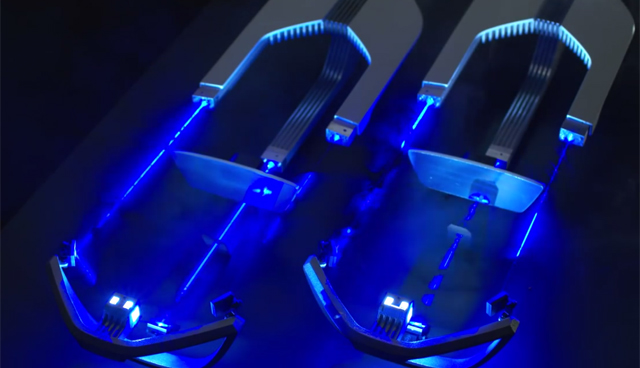
We recently had the opportunity to experience the latest in night vision technology on a BMW 7 Series. Though we have evaluated night vision systems in the past, this one proved to have far clearer images and was also able to highlight animals and pedestrians. Today’s systems utilize advanced infrared cameras to “see” heat, not light, making anything that has a “thermal” image visible even through darkness or fog.
If the system determined that an animal or pedestrian was dangerously close or approaching the car’s lane of travel, it gave an audible beep and a visible warning in the car’s head-up display. This added warning proved important as the normal night vision view is on the screen in the dash and not in the driver’s normal line of sight—our only complaint.
As with many new safety technologies, the newest night vision systems are currently available on BMW and other high-end makes such as Audi and Mercedes-Benz. Over time, the production cost and marketplace acceptance often allows pricey systems to “trickle down” to cars more of us can afford over time. We haven’t seen that with night vision yet, despite Cadillac's offering it many years ago.
You can find headlight evaluations in the road tests.
The importance of night vision
Each year more than 4,000 pedestrians are killed, and tens of thousands more are injured, when struck by a car. Not surprising, nearly 70 percent of those impacts happen at night, when drivers have limited visibility.
In Consumer Reports’ car evaluations, we include a test of how well each vehicle’s headlights allow you to see at night. This not only assesses each car’s lights, but allows us to speak to how different headlight types perform. Are LEDs better than HIDs? Are HIDs better than standard halogens? Regardless of headlight type, our evaluations do show that even the best of any type do not provide enough forward visibility to allow a driver to see, react, and brake for pedestrians or objects ahead unless they are going rather slowly. What this also means is that any technologies that help improve our nighttime visibility should positively affect pedestrian safety.
A glimpse toward the future
We also had the opportunity to drive a development vehicle equipped with BMWs Dynamic Light Spot. This system went one step further in not only detecting living obstacles, but by making them still more visible by shining a spotlightlike light on them to make the driver even more aware of their presence. Those of us who had a chance to drive this car commented that at times, the beam illuminated pedestrians we hadn’t even seen yet. The spotlight is generated from lights in the fog lamp housing, so it stays low and close to the road. It was quite effective.
Currently, standards for lighting in the United States prohibit technologies such as this. The spotlight output exceeds maximum levels of light currently permitted, with the intention to eliminate a headlight’s potential for glare to oncoming drivers. Regulations also prohibit headlights and other forward lights from turning on and off during operation, a function limited to identifying emergency vehicles. But the low position of the light from the fog lamp and the fact that it doesn’t strobe or flash as emergency vehicle lights do may mean that these limitations in the current lighting standards could conceivably be revised to allow such technologies. Features such as dynamic light spot are currently available on vehicles in Europe.
For now, we will continue to evaluate current and new technologies in lighting, and headlamp performance on each vehicle we test. And we will monitor standards, advocating where appropriate to allow newer technologies that offer the potential to improve night driving safety. LINK & LINK2 & LINK3